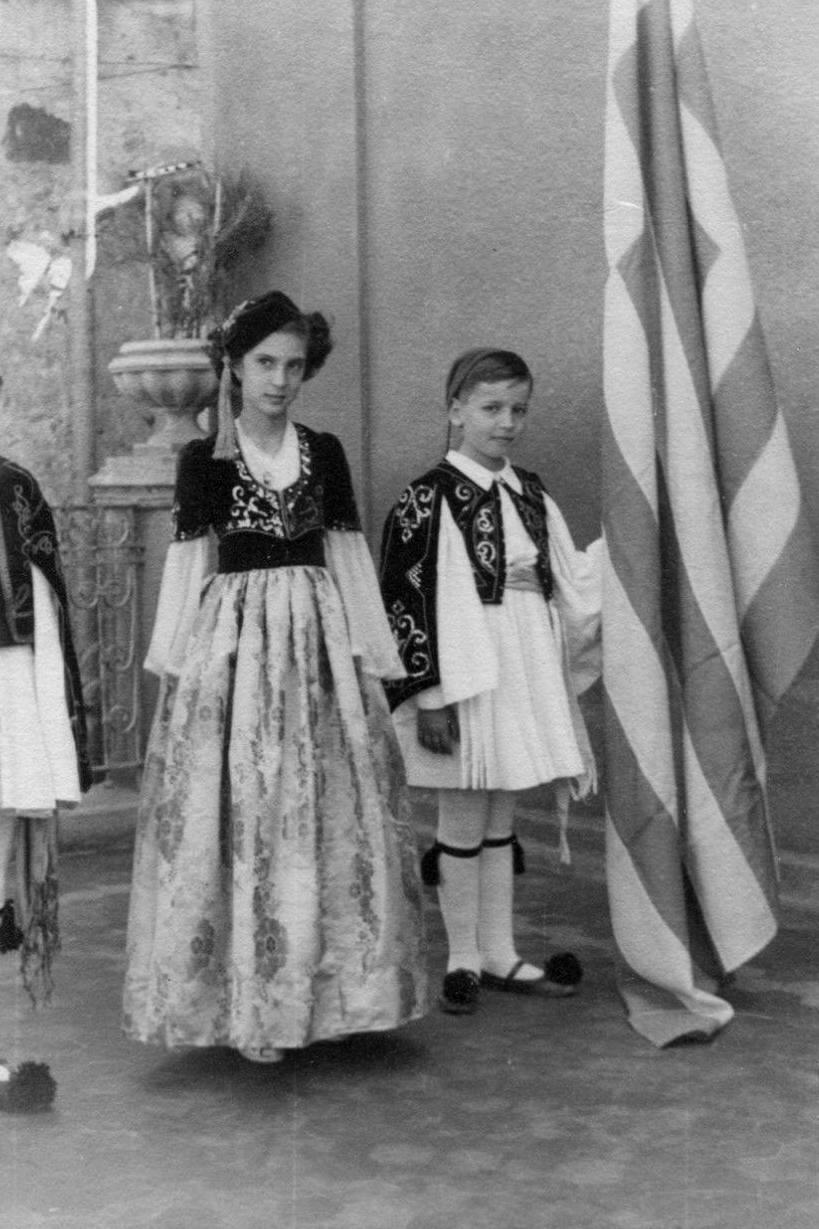
Eritrea Ethnicity

Figure 1.--Italy colonized Eritrea (19th century). The United Nations federated Ethiopia and Eritrea (1952), but when Ethiopia disolved the federal arangenmenbts and annexed Eritrea as a province, a war broke out. The diverse people of Eritrea largely fiormed a solid front against the Ethiopianms. During the Italian colonial period, Europeans moved to Eritrea. They often set up shops like photographic studios. This was primarily Italians, but include other nationalities such as Greeks. They largely lived apart from the Eritreans. The Allies occupied Eritrea during World War II. After the War, mny of the Italians were repatriated and most of the other Europeans followed after the country was federated with Ethiopia (1952). These Greek children were photographed in Asmara during 1952. Click on the image to see the writing on the back.
|
|
Situated along a coast can lead to isolation or contact. For the Japanese it led to isolation, because there was nothing but sea to the east. For Eritra it led to conrct because it was located along sea routes as well as trade into the interior. This has led to a diverse ethnic population in Eritrea. There are nine ethnic groups recognized by the Government.
The largest Eritrean ethnic group are the Tigrinya, the group indigenous to this area, at least for over 2,000 years. They dominate south central Eritrea. The Tigrinya language is related to the Semitic language family, giving a clue as to their origins--the Arabian Peninsula. Other modern Semetic languages are Arabic and Hebrew. The written version uses Ge'ez, an ancient script. It is the country's most commonly used language. Tigrinya is the official language as is Arabic. Actual language usage varies regionlly along with ethnity.
The country's other major ethnic group are the Tigre, related to the Tiginya. They dominte the north. The Tigre also speak a Semetic language. They comprise about 30 percent of the population. The Tigre mostly live in the northwest, bordering Sudan. They are mostly nomadic pastoralists herding animals as part of family-based clans. The Tigre are mostly Muslim, following a sect largely centered in Sudan. The seven other ethnic groups are much smaller, making up about 15 percent of the population.
The Saho are related to the ancient Kushites who contened with the Egyptians over the upper Nile. They live in the south central/southeast, making up perhsps 3 percent of the population. .
The Kunama people live yn the southwest. They are another Nile River groups in modern Sudan.
The Afar lare nearly 50 percent of the population and live in the southeast near Djoubuti.
The Bilen live in central Eritrea.
The Hadareb inhabit the northwest
The Nara live in the southwest.
The Rashaida inhabit the northwest.
Italy colonized Eritrea (19th century). The United Nations federated Ethiopia and Eritrea (1952), but when Ethiopia disolved the federal arangenmenbts and annexed Eritrea as a province, a war broke out. The diverse people of Eritrea largely fiormed a solid front against the Ethiopianms. Duruing the Italian colonial period, Europeans moved to Eritrea. This was primarily Italiansd, but include other nationalities such as Greeks. They largely lived apart from the Eritreans. Many Italians set up shops like photographic studios. This was primarily Italians, but include other nationalities such as Greeks. The Allies occupied Eritrea during World War II. After the War, mny of the Italians were repatriated and most of the other Europeans followed after the country was federated with Ethiopia (1952).
HBC

Navigate the Boys' Historical Clothing Web Site:
[Introduction]
[Activities]
[Biographies]
[Chronology]
[Cloth and textiles]
[Clothing styles]
[Countries]
[Topics]
[Bibliographies]
[Contributions]
[FAQs]
[Glossaries]
[Images]
[Links]
[Registration]
[Tools]
[Boys' Clothing Home]
Navigate the Boys' Historical Clothing national pages:
[Return to the Main Eritrea page]
[Return to the Main African country page]
[Return to the Main African page]
[Angola]
[Cameroon]
[Chad]
[Cape Verde Islands]
[Central African Republic]
[Democratic Republic of the Congo]
[Djbouti]
[Ethiopia]
[Gabon]
[Lessotho]
[Madagascar]
[Mali]
[Nigeria]
[Republic of the Congo]
[Somalia]
[South Africa]
[South Sudan]
[Sudan]
[Uganda]
Created: 8:03 AM 11/10/2018
Last updated: 8:04 AM 11/10/2018



